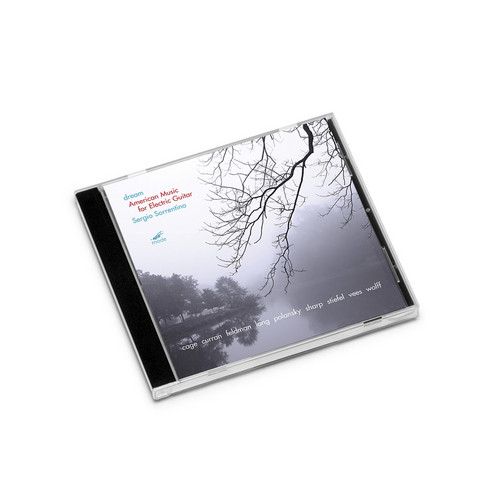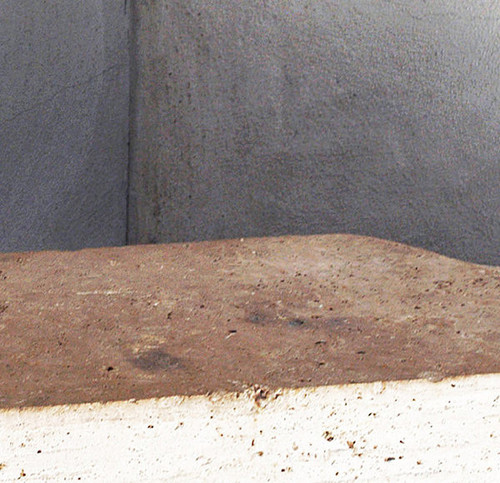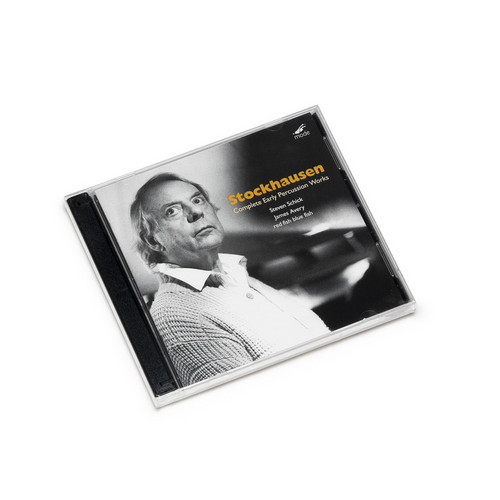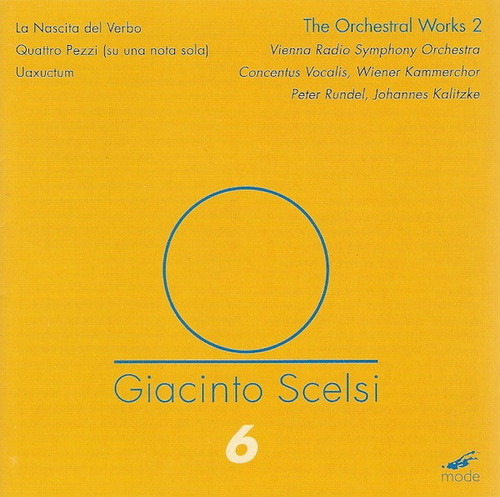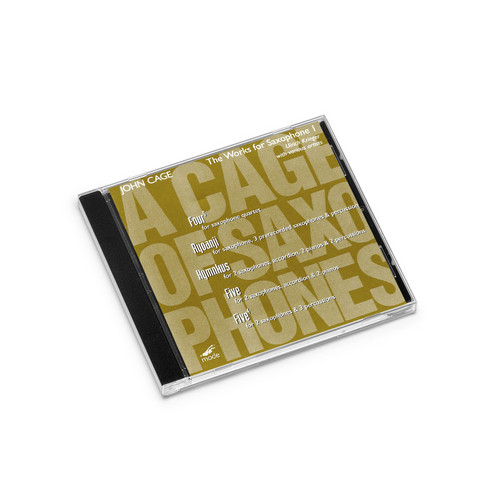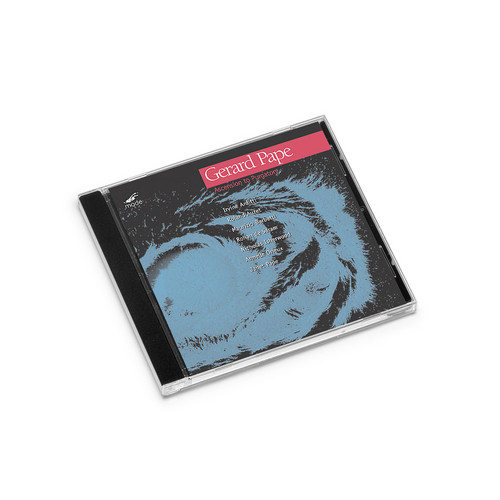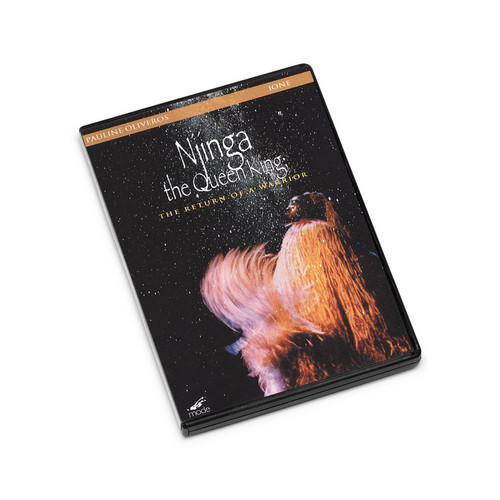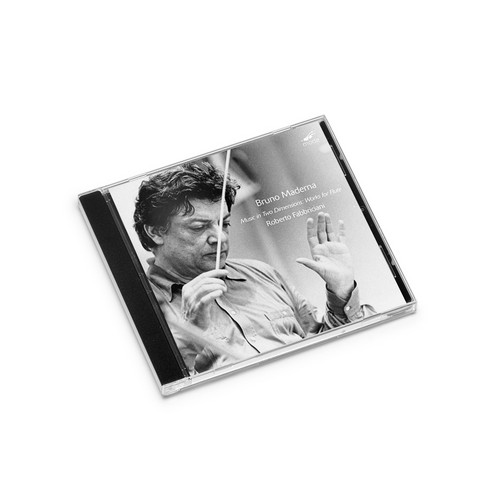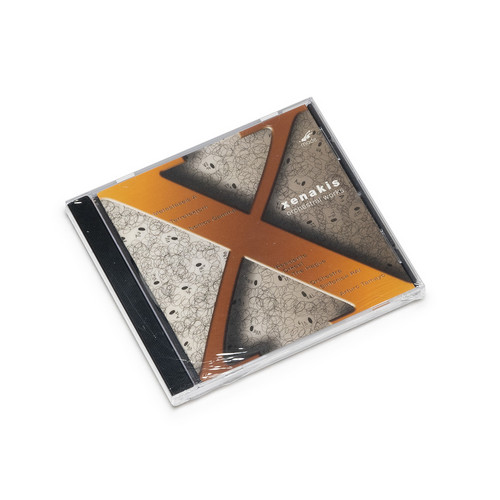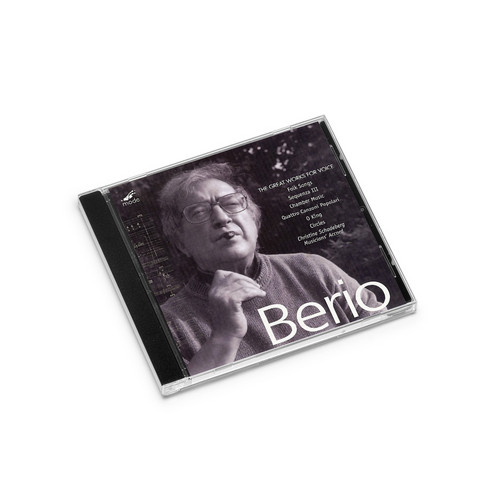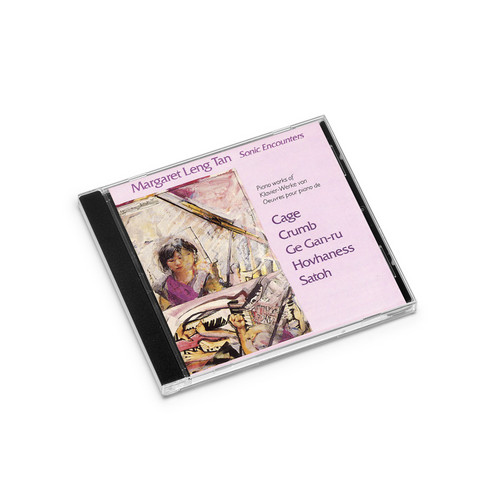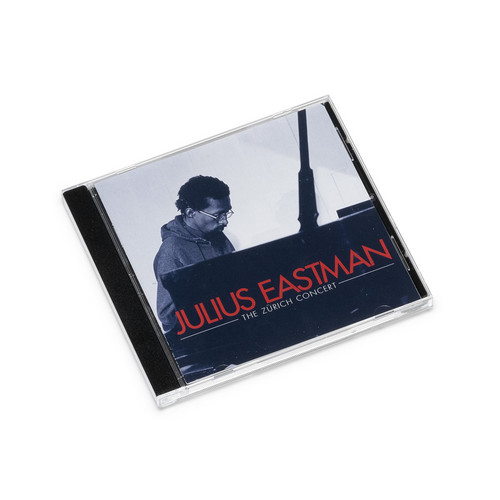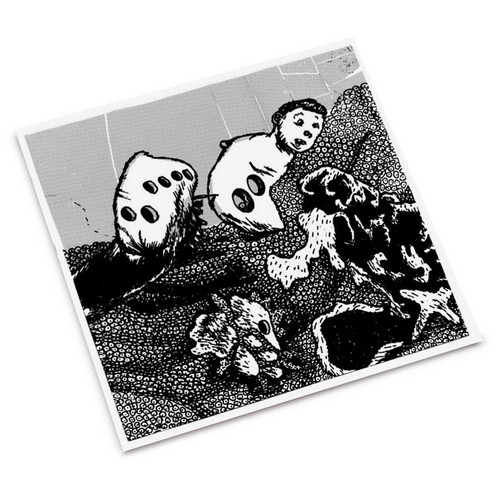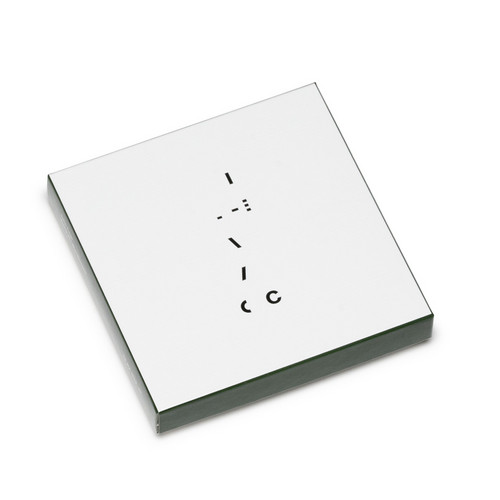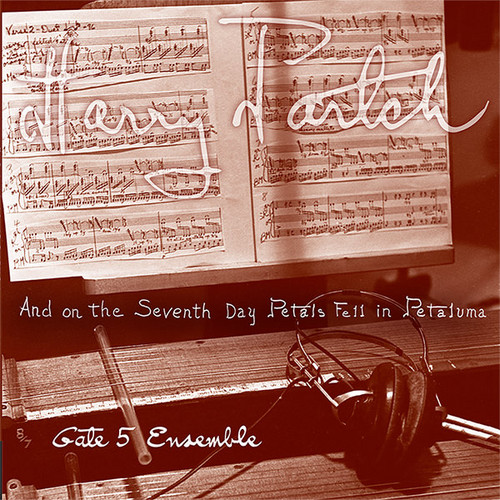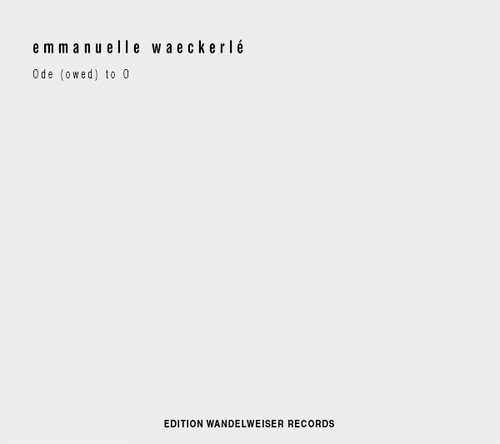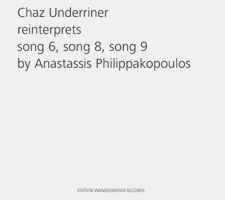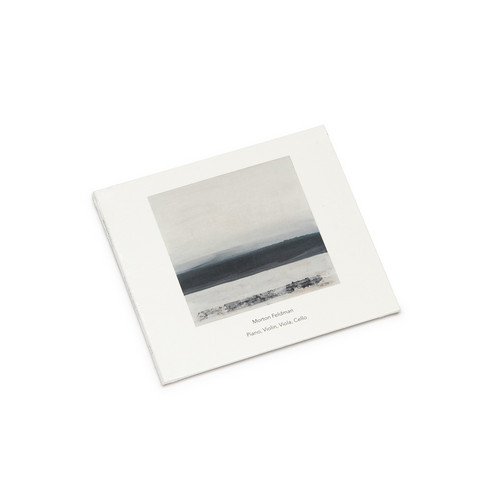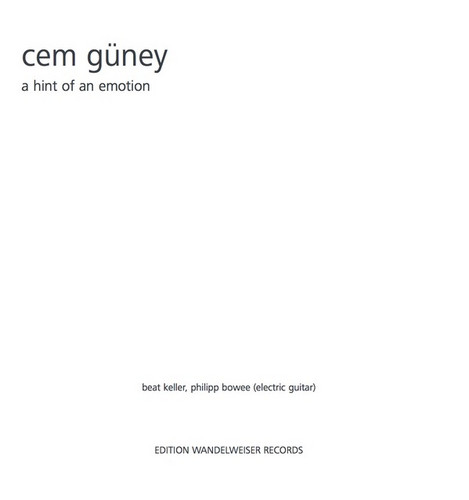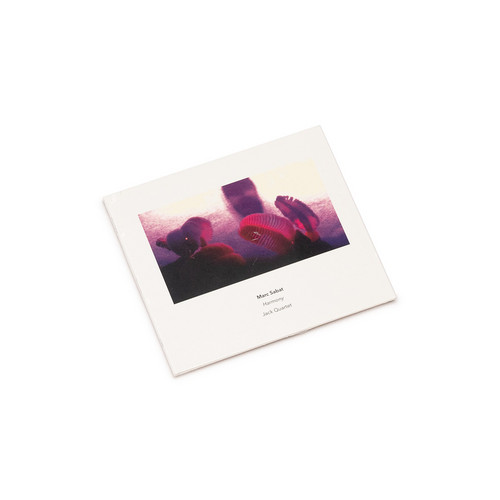Dream, American Music for Electric Guitar
“Dream” is a musical journey through the sound of the electric guitar in American concert music, based on sonic research and on the simplicity and beauty of the electric guitar timbre and colors.Sorrentino’s transcription of Dream by John Cage opens the program. This version demonstrates the pure beauty of the electric guitar’s clean sound with only the addition of light reverb. This is the first CD release for the lost electric guitar composition by Morton Feldman, The Possibility of a New Work…
Where Are We Going, Today
Christian Wolff, piano, objects, charango, flute. Antoine Beuger, voice, whistles, EWR recordings (1995) of Christian Wolff’s “Stones”.Antoine Beuger started composing music in 1990 and has released on his own label, Edition Wandelweiser Records, as well as Erstwhile Records. Beuger’s work is best exemplified by two releases, his first, Calme Étendue (Spinoza) and A Young Person’s Guide to Antoine Beuger. Calme Étendue (Spinoza) is an album that attempts to take the 17th century philosopher Spin…
Complete Early Percussion Works
Stockhausen’s early percussion music is among the most visionary of the percussion repertoire. This unique collection features some works which are almost impossible to find elsewhere. Zyklus was not only a novel composition in terms of its treatment of time and structure, it was also the first percussion solo ever performed. Kontakte, a masterpiece for piano and percussion with 4-channel tape, challenges to performers to play together and to make the maximum number of “contacts” with the tape. …
The Orchestral Works 2
"The first recording of his 32-minute grand cantata 'La Nascita del Verb.' Steeped in chromaticism, with hints of Scriabin and a sea of percussion, 'Nascita' boasts a vast double fugue (one of the most imposing in the history of music) and a forty-seven voice canon in twelve keys. This work, 'truly written in blood,' left Scelsi 'in a deplorable state, afterwards he stopped composing for several years. One of Giacinto Scelsi's infamous pieces are the 'Quattro Pezzi (su una nota sola).' Ear piece…
A Cage of saxophones 1
Between 1983 and 1991 John cage wrote three pieces specifically for saxophones, Four5, Five4 and Hymnkus, which are combined here for the first time on CD. In addition, Cage authorized Ulrich Krieger's arrangement for saxophone of Ryoanji. Krieger also made a saxophone arrangement of Five, one of the few compositions from this period performable on any instruments. This unique disc concentrates on Cage's late works for saxophone. A CAGE OF SAXOPHONES VOL.2 (mode 160), features a combination of…
Ascension to Purgatory
This is Pape's third monographic CD with Mode Records. Whereas his last Mode CD ("Electro-acoustic Chamber Works", released in 1998) presented his ground breaking works of 1993-1996, this new CD presents a selection of his more recent pieces composed from 1998 to 2004. While Pape continues his fascination with composing with chaotic sound in Le Fleuve du Désir IV and Weaveworld Prologue, it is his new approach to composing with packets of granular time that predominates on this CD. In La Na…
Njinga: The Queen King – The Return of a Warrior
Written and Directed by IONE Original music and Sound by Pauline Oliveros Traditional Congolese Music by Titos Sompa Set and Costume Design by Valerie Maynard, Dance and Movement by Carol Chappell, Nego Gato, Biza Sompa and Titos Sompa, Traditional Brazilian Music and Dance by Nego Gato.
Njinga the Queen King is a collaborative effort between writer/director Ione and composer Pauline Oliveros, which they refer to as “a play with music and pageantry.” It is based on historica…
Music in 2 Dimensions – Works for Flute
In honor of the 40th anniversary of great composer/ conductor Bruno Maderna’s (1920-73) death, Mode is pleased to release the first complete CD of Maderna’s music for flute. The flute played an important part in Maderna’s oeuvre due to his friendship with the exceptional flutist Severino Gazzelloni, who had premiered almost all of the flute compositions. Musica su due dimensioni is among the earliest examples to make live music interact with electro-acoustic sounds recorded on tape. There …
Xenakis Edition 15, Orchestral Works
**CD Edition** Metastaseis A (first recording), Orchestra Sinfonica RAI; Terretektorh for 88 musicians dispersed among the public; Nomos Gamma for 98 musicians dispersed among the public — Residentie Orkest The Hague, Arturo Tamayo, conductor.
The Great Works For Voice
Mode's reissue of Christine Schadeberg's 1995 recital of vocal music by Luciano Berio is a welcome addition to the catalog. While her performances don't make the listener forget the individuality and panache of Cathy Berberian, for whom most of these pieces were written, Schadeberg more than holds her own in her technical and expressive mastery of the music. Her voice is not large, but is remarkably flexible and secure, and her tone is pure. These performances are models of precision and clarity…
Sonic Encounters
The second recording from Margaret Leng-Tan, the "diva of the avant-garde", featuring works by three composers whom she specializes in: John Cage (USA), Somei Satoh (Japan) and Ge Gan-ru (China/USA). With Sonic Encounters: The New Piano, she explores the effect of Asian aestehtics on contemporary American composers and the influence of American composers on their Asian counterparts.The first recordings of two early works by Cage impart a hard-edged brilliance not usually associated with the prep…
The Zürich Concert
Just when you think you are grasping the breadth and quality of the music of Julius Eastman (1940 - 1990), a recording such as Julius Eastman: The Zürich Concert shows up, and you have to go back and reassess his work and wonder what will show up next. This recording is from a 1980 solo seventy-minute improvisatory concert in Zürich, a cherished cassette made by a friend of Eastman's, who recently realized its uniqueness and decided that he should share it. The Zürich Concert was performed on Oc…
17 Stücke
Helmut Kaplan is multimedia artist that belongs to distinctive art scene of styrian capital of Graz. His medium of expression belongs to visual arts (mostly comic), as part of Tonto association, which once included legendary record label with artists that are already seen on GOD roster (Robert Lepenik, Winfried Ritsch, Kauders, Bernhard Lang, Peter Ablinger). He was part of bands like Fleischpost and skin and since middle '90s he is interested in different loop structures through different med…
Klang Der Wandlungen
From the liner notes by Jakob Ullmann (translated by Peter Gebert and Molly McDolan): "It was during a break in the inaugural meeting of the East German section of the IGNM (International Society for Contemporary Music) in March of 1990 when Reinhard Oehlschlägel, the long-standing music editor of Deutschlandfunk in Cologne, suggested taking advantage of the fact that John Cage was to attend the summer courses in Darmstadt as a special guest by inviting John Cage to East Berlin. . . . Making Gia…
And On The Seventh Day Petals Fell In Petaluma
The history of American avant-garde music is a snarled knot, twisting through the decades, spanning genre, practice, and approach. Most narratives plant its origins within the post-war period, orbiting around John Cage, Morton Feldman, and those artists springing from the movements of Fluxus and free-jazz. American creative innovation issued unquestionable influence over the later half of 20th century, but the root of its radicalism was earlier, with its origins often misplaced. Rather growing f…
Ode (owed) to O
2017 release **
Reading (Story of) O brings together (Story of) O a graphic and semantic reworking of the original story (English and French words coexisting on the page) accompanied by two fictional texts (Story of) A and (Story of) E, and Reading O, a few simple strategies and choices for reading—alone or with others, in private or to an audience, so that you may find your way through it as through you own story. This is the first collective reading in English and French with 9 readers, it la…
Chaz Underriner Reinterprets Anastassis Philippakopoulos
2015 release **
"The pieces by Anastassis Philippakopoulos that guitarist Chaz Underriner "reinterprets" here were written for instruments other than his own: flute (Song 6, which Wandelweiser Editions published earlier under the composer's name on Songs And Piano Pieces), string section (Song 8, which Underriner performs with three other guitarists: Armin Abdihodzic, Greg Dixon, and Robert Trusko), and bass clarinet (Song 9). Three songs that follow one another discreetly, moving slightly unde…
Piano, Violin, Viola, Cello
Piano, Violin, Viola, Cello marks the culmination of Morton Feldman’s late chamber writing, recorded at Henry Wood Hall in London in 2017 by a quartet comprised of Mark Knoop (piano), Aisha Orazbayeva (violin), Bridget Carey (viola), and Anton Lukoszevieze (cello). The composition, premiered in 1987, unspools over seventy-five minutes as an unhurried expanse - a landscape where micro-variations bring fragile changes within near-stasis, and the weight of each chord, sustain, and silence is palpab…
A Hint Of An Emotion
2017 release **
"The duo of Beat Keller and Philipp Bowee on electric guitars perform 6 subtle compositions from Turkish-born sound artists and composer Cem Guney's, including 'a bas relief of a talisman' dedicated to Charles Ives and 'soft kill incubator' dedicated to Sylvia Alexandra Schimag."
Harmony
With Harmony, Berlin-based Canadian composer Marc Sabat presents three substantial pieces for strings, performed by Jack Quartet - Ari Streisfeld and Christopher Otto (violins), John Pickford Richards (viola), and Kevin McFarland (cello) - with appearances by Christopher Otto (violin) and Kevin McFarland (cello) in a duo. Sabat’s oeuvre stands at the forefront of contemporary explorations of pitch and tuning, weaving rigorous systems of just intonation into scores that privilege sensitivity, lyr…
